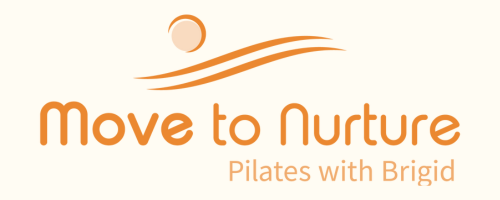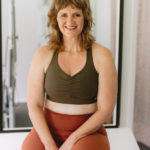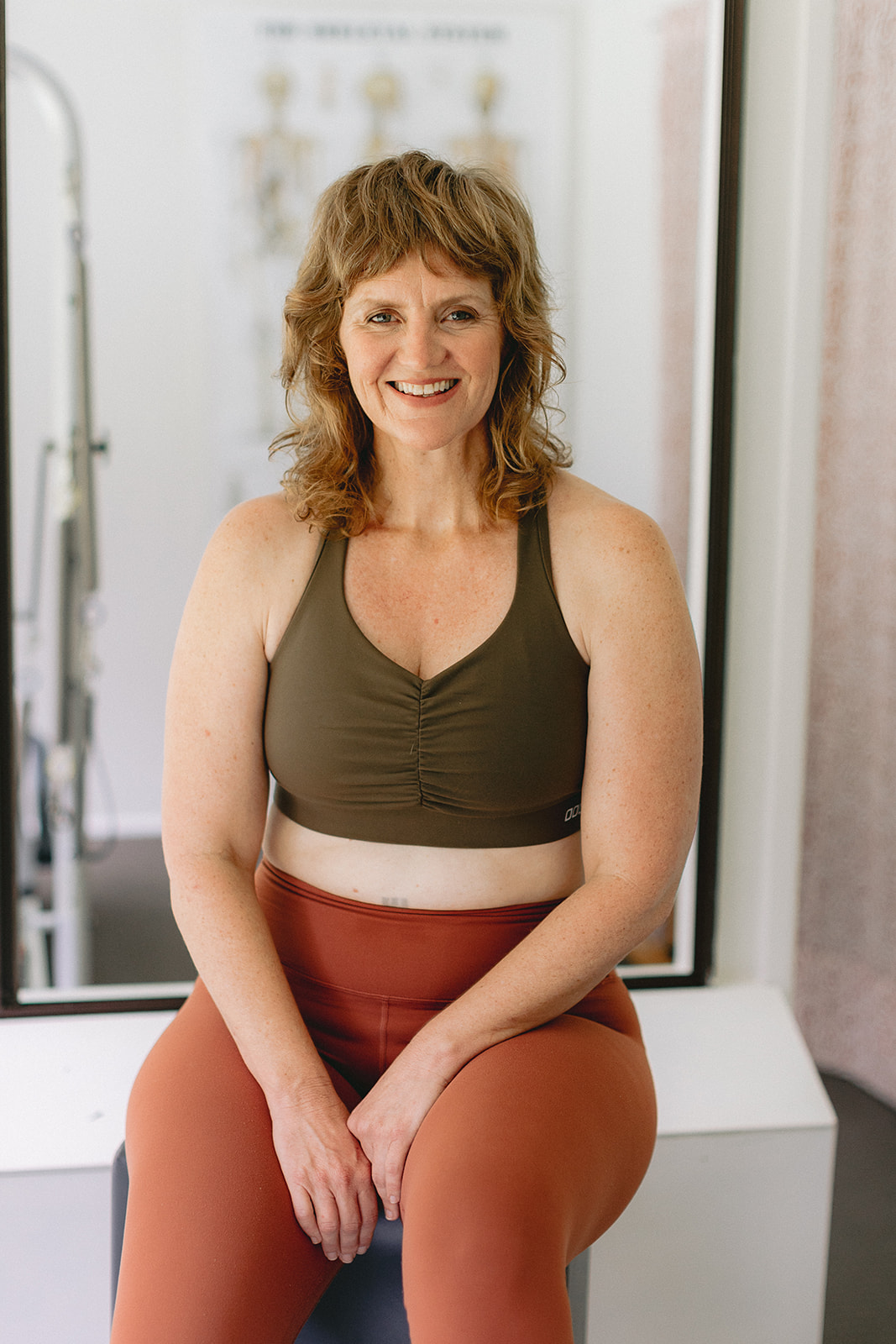Do you suffer muscle tightness? Do you feel tight all over? There is a big difference between being tight and being strong. In fact when your body is tight, it can be difficult for your muscles to strengthen. This article explains the difference between muscle tightness and fascia tightness, both of which contribute to a tight body and then includes 6 tips to reduce all over body tension.
Muscle tightness or fascia tightness?
Our muscles are intimately connected to our fascia. Fascia is a thin casing of connective tissue that holds every organ, blood vessel, bone, nerve fibre and muscle in place. Fascia has nerves that make it almost as sensitive as skin, when it is stressed it tightens up.
Muscles attach via tendons and ligaments to our bones and move them. In a horse and cart analogy, the bone is the cart, the tendon is the attachment to the horse and the muscle is the horse.
It can be difficult to work out if your tightness is due to muscle tightness or fascia tightness and the two do impact on each other.
Tip 1 Become aware of where you are gripping
This is probably the hardest one to do. We have to be aware of our our bodies to notice where our muscles are gripping. Common gripping patterns occur in our gluteals or bottom, our lower back, our pec muscles at the top of the chest and our ribs pulling down at the front.
When you notice your muscles gripping make a conscious, relaxed effort to let go. If you notice you are gripping, you relax and then minutes later you’re gripping again, this is a gripping pattern. Our bodies develop a gripping pattern when other muscles are not working effectively, so the body compensates to get stability by gripping with other muscles. Seek help from a qualified movement teacher (Pilates or Yoga) or a manual therapist (Physiotherapist or Osteopath) to release gripping muscles and learn to recruit the right muscles for the job.
Being curious towards your body and which muscles are working or gripping can go along way to finding your own alignment and relaxing your muscles. Awareness is the first step.
Tip 2 Hydrate!
Drink at least 1.5 L of water a day. Unless you have issues with your kidneys which means you need less water then get to this volume each day. Hydrated muscles are less tight and able to work better to build strength. Start in the morning with a couple of glasses and make this a habit throughout the day to enjoy less tension in your muscles.
Drinking water helps your cells, muscles and connective tissue (fascia) stay hydrated. Tight muscles and muscle cramps can be a sign of dehydration.
Make it part of your routine to drink water throughout your day.
Tip 3 Move enough each day
If you are suffering from a tight body, enough movement each day will be at least 30 minutes per day. This doesn’t need to be all at once but at least 10 minutes of movement at least 3 times through the day is the bare minimum.
Most of us are under moved. We just don’t get enough movement for our physiology. Too much sitting or staying in one position for too long contributes to muscle and fascia tightness.
The easiest movement for most people to get is walking, but it could be Pilates, Yoga or sport that you love. The more variety the better. And of course there is always dancing around the lounge room, one of my favourite movement snacks.
Tip 3 Boost your magnesium
Magnesium can reduce muscle cramping and tightness particularly due to hormonal fluctuations during your cycle and coming into perimenopause.
Muscles that don’t have enough magnesium can’t properly relax and this can cause cramping. Low magnesium can create a build up of lactic acid, usually associated with post workout pain and tightness. Magnesium is part of long term muscle growth and strength.
Natural ways to boost your magnesium is to include green leafy vegetables, pumpkin seeds, flax seeds, almonds, cashews, pecans, walnuts, brown rice, avocado, beans, raw cacao, endamame and seaweed in your diet.
Always seek advice from your doctor before starting supplements.
Tip 4 Use a muscle release tool regularly
A muscle and fascia release tool is usually made from wood or rubber, in a shape that is easy massage muscles into.
My favourite muscle and fascia release tool is the Markalu which includes six domes so you can grade the pressure as you get used to it. They are also are magnetic so you can use them standing up against a fridge or filing cabinet.
Any rubber ball either smooth or with ridges can do wonders for example tennis ball. For tight legs and bottom lie down on your back with your knees up, souls of feet to the floor. Place the tennis ball under one butt cheek, then drop that knee gently out to the side (towards the floor) and up again. Repeat about 12 times and then do the other side.
Releasing through your feet brings benefits all over your body.
Standing on one leg (close to a wall to help with your balance if you need) bring your other foot onto the tennis ball and roll from the ball of you foot to your heel and back about 10 times. Then bring the ball back under your heel and stand on it, then move the ball forward just in front of your heel and stand on it again, then move it forward to the middle of your arch and stand on it again until you bring the ball over the ball of your foot to your toes. Transferring your weight (standing on the ball) at different points on your foot. Notice how different your foot feels now! And then do the other side.
The key word here is regularly! Doing this once might feel nice but it won’t make much of a difference. Put your muscle and fascia release tool somewhere you will see it, next to where you watch TV or where you wait for the kettle to boil. Take a few minutes to release tight areas twice a day for at least two weeks to start to feel the difference.
Beware of rollers for muscle release, the they can sometimes be too strong and end up aggravating muscles and tight Facsia.
Tip 5 Less passive stretching
Passive stretching is when you have no load on your muscle and you try and lengthen them, for example touching your toes. Static stretching can actually engage the reflex in the muscle to contract rather than lengthen to protect the muscle and for an already tight body this is no good. Instead, experiment with lengthening your muscles under load.
Pilates equipment is a specially designed to lengthen muscles whilst under load easily. If you are using weights in the gym you may need to consult a professional to help you find how to lengthen your muscles whilst loading them. This develops strong, long muscles that support your bones. Well worth the technical effort.
If you are a fan of passive stretching consider these suggestions.
- Be meticulous with your alignment and understand the joint positions you need to get to achieve the length you want.
- Go gently. You will never force a muscle to lengthen, you may coax a muscle to release if it is well hydrated and relaxed and the alignment is just right.
Tip 6 Breathe Deep
Breath will help relax your muscles and fascia. Using breath with muscle and fascia release and active stretching will improve your ability to respond to the load and therefore help you build strength faster. Breath also brings the mind into the body promoting body awareness and mindful movement helping to reduce injury and calm the nervous system. Breathing into areas of the body that are tight can help them release and let go. And can over time change a gripping pattern. Your breath is underestimated as a tool for muscle and fascia relaxation, use it, it’s free.
A tight body from muscle and fascia tightness is not the worst thing to have, but it can be uncomfortable and lead to things like tension headaches and poor posture. The tips in this article are pretty simple everyday things you can do to release tension regularly. Of course there are a bunch other ways such as laughing until you cry, making love and swimming in the ocean but these are not available to everyone everyday.
Developing a relationship with your body where you are listening to what your body needs and responding is the gold standard for managing your all over body tension day to day.
I am Brigid Pearse a certified Pilates instructor, an ex-dancer and a mum. I run a fully equipped Pilates studio from my home in Lennox Head and I run community Pilates mat classes in Byron Bay, Ballina and online. To receive regular body wisdom sign up below.






Brigid I love standing next to the wall and rolling the tennis ball under the foot. Then reversing to other foot
Thanks Joan! Rolling through your feet is a great way to relieve all over tension. Thanks for sharing.